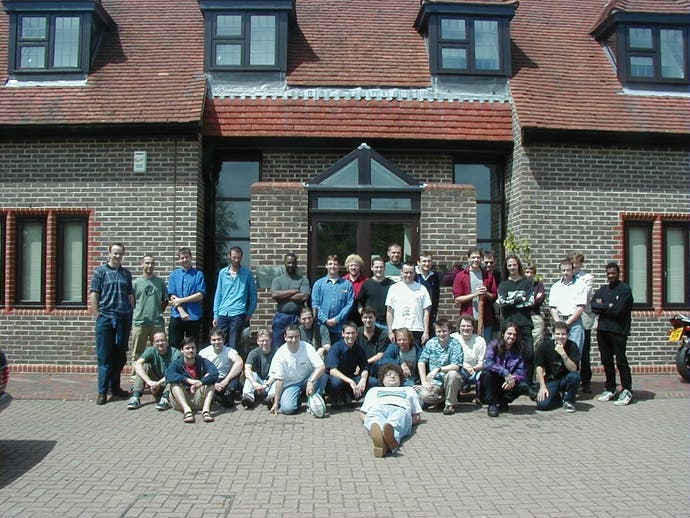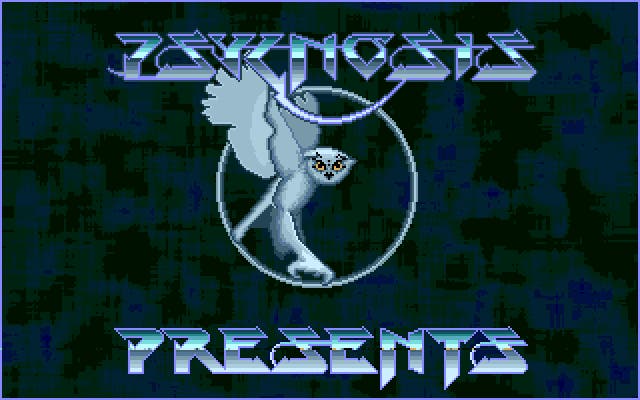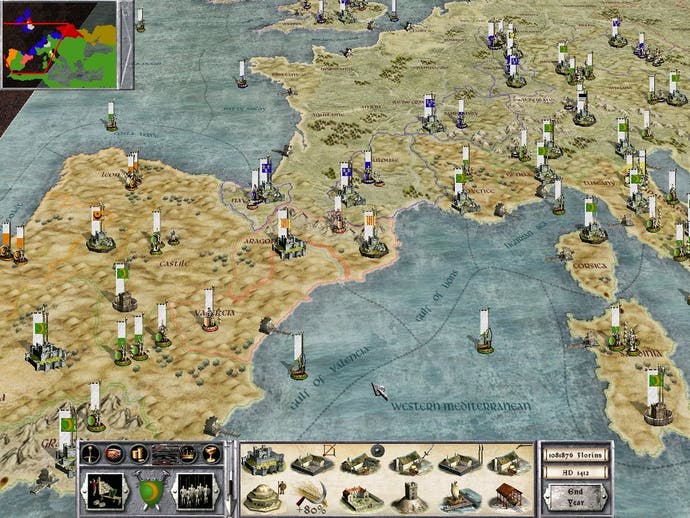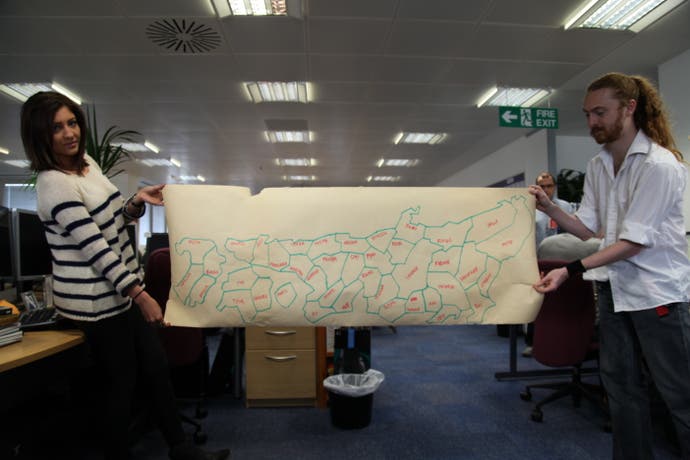Creation Legend: The history of The Creative Assembly
Developer: Total lore.
It's a cloudy day in Horsham, West Sussex, and as I arrive to conduct a second interview with some of the senior members of The Creative Assembly's staff, the news breaks that Sony Liverpool has been closed. This was a developer that could trace its history all the way back to 1984 when, known as Psygnosis, they were one of The Creative Assembly's peers. News of the closure has The Creative Assembly's staff wondering if this means they're now the UK's oldest surviving developer.
Whether they are or not, they're certainly one of its most successful. Curiously enough, that's thanks in no small way to Psygnosis. Then again, the history of The Creative Assembly seems to be defined by curiosities and coincidences.
25 years ago, studio founder Tim Ansell was keeping himself busy programming for the Amstrad CPC and porting games from platform to platform, working with the PC, the ZX Spectrum, the Amiga and the Commodore 64. During the late '80s and early '90s, Ansell worked with Psygnosis to port some of their most famous titles, including Microcosm and the much-lauded Shadow of the Beast.
It was here that he met Mike Simpson, the man who sits opposite me now and the man who would become the driving force behind the Total War games, the series that would propel The Creative Assembly to strategy superstardom and gradually grow Ansell's company from half a dozen staff to over 200. But it would be some time yet before the two would join forces.

By 1994, a comfortable partnership with Electronic Arts had Ansell's team porting the first FIFA game to the PC. Making use of the fledgling technology that was the CD-ROM, they decided to experiment with a new concept: the introduction of real-time match commentary, read by veteran commentator Tony Gubba. Several more sports games would follow and by 1999 The Creative Assembly had produced football, rugby, cricket and Aussie rules titles, but nothing that suggested they were about to become master strategy developers. Their chief concern was a forthcoming move to Singapore.
"When I joined in '96, there were five people in the company doing these sports games for EA," says Simpson. "We decided we wanted to expand, set up another team. Our first idea was to do an RPG based on Monkey: Journey to the West. We were going to do it in Singapore, because the Singapore government was paying huge grants for companies."
Following through with this move would've taken the team (and perhaps all of strategy gaming) in a very different direction, but for Simpson it would've been much more familiar territory than sports games. His own background was in RPGs and strategy titles, and his first game was the Spectrum's Swords & Sorcery, coded all the way back in 1985.
For the developer, the breaks and the benefits presented were serious food for thought, but not quite as appetizing as they needed to be. "We spent six months, nine months looking into that, and decided that the offer was too good to be true," Simpson says. "There were too many strings attached."
"We worry about competition. There are people out there who are capable of doing something similar, but we have a great head start, a huge amount of knowledge. And it's good to be paranoid sometimes."
Tim Heaton

Instead, they would try for something much easier, and much simpler. The PC games scene was awash with real-time strategy titles, games that didn't necessarily need to be any good to shift units, so The Creative Assembly would make one and, they figured, could probably do a passable job of it. Simpson describes the project that he began as "a B-grade Command & Conquer clone" that "wasn't a master plan from the start." But coincidence would have its way.
While they may have been lacking a master plan, the team did have a fresh new take on real-time strategy, the opportunity to exploit a new technology and, in Simpson, a designer with an eclectic array of influences. As these elements came together, a remarkable new game began to take shape until, one day, The Creative Assembly realised they had something "fantastic" on their hands. When was that, exactly? "That was probably the point that we went back to EA and asked for more money," says Simpson, his tone wry. Then he tells me how they got it.
It's a six weeks earlier and I'm talking with James Russell, the lead designer of the Total War series, who jokingly refers to Simpson as "the IP Godfather." Although Russell joined the Total War team in 2004, a full four years after Shogun's release, he's well versed in the story of how the game's elements came together, and he starts by explaining that fresh, new take.
"They had the idea for a new kind of strategy game, something where you're not controlling tens of soldiers in your army. You're controlling hundreds or thousands, and using flocking mechanics to model that," Russell explains. Flocking? "Flocking behaviour. In birds."
While a much greater number of units was ambitious, it was also unwieldy. A player would never be able to individually control a thousand different soldiers. It was the flocking mechanic which would bring both a mode of control and a sense of coherence to this larger battle, allowing soldiers to behave as units and act with a rudimentary, context-sensitive AI.
Each soldier would have an understanding of their current condition, of where they were on the battlefield, where their unit commander was and what their position should be within their formation. It allowed them to move and act as a body of men, but still exist, behave and respond as individuals.
"[Viking: Battle for Asgard] was released on the last day of the financial year. That was its feature."
Mike Simpson

The team also wanted to make use of the new technology that was transforming PC gaming: 3D graphics cards. While many first-person shooters and third-person action games were enjoying the benefits that a dedicated 3D card could bring, most RTS games were still using fixed isometric perspectives, sprites and voxels. A fully three-dimensional battlefield wouldn't simply be a map, it would be terrain, smooth and organic, with all the natural barriers, lines of sight and high ground you'd expect for any real battlefield.
They wanted a context for all this, a backdrop for their great battles, and Simpson drew inspiration from the late '80s Amiga title Lords of the Rising Sun, a North & South-style game which featured a strategic overview of 12th Century Japan and cut away to arcade action sequences that represented battles, sieges and assassinations. The decision was made to remove the base-building and unit construction that featured on most RTSs battlefields and instead focus on more realistic, historical battles. Historian Stephen Turnbull was employed as a consultant.
Would it be possible to unite these different elements, to create an RTS game that made use of true 3D terrain, across which thousands of soldiers could fight battles based on the movement of armies around a map of medieval Japan? "They said: You know, we can do this. We can do this here in Horsham, and we can do this now." The game would be called Shogun: Total War. Their "B-grade Command & Conquer clone" was now something they were convinced would be a hit.
There was only one thing they needed: more money.
After half a decade working on sports titles, The Creative Assembly's funding was coming from a slightly unconventional sponsor who was neither local nor doing things by the book. "Strangely enough, we were operating with EA Australia's marketing department, they were the people who were funding it, because we'd just been doing Australian Rules Football with EA," says Simpson, and then he pauses for the briefest of moments. "They kind of subversively funded it. I don't know if they were supposed to do that, it wasn't part of their remit."
Nevertheless, they did, though they had to reach beyond their own means to make sure Shogun got the money it needed. "They didn't have a studio, they weren't supposed to do development," Simpson continues, "So they got a third party involved, a company called Dreamtime, who funded part of it. Kind of... sneakily." Dreamtime Interactive appear to be one of the more obscure names in the games industry, and don't seem to have been credited on any other games, before or since.

Shogun: Total War was released in the summer of 2000 and met with enormous success. The Creative Assembly, already considering other eras for their Total War series, immediately began work on a sequel. To the outside world, this sequel appeared to be Medieval: Total War but, as Russell explains, that game was really something of a stopgap. The team were keen to stay ahead of their numerous RTS rivals and their next game, Rome: Total War, would be four years in development.
"The studio started working on Rome immediately after Shogun," he says. "Medieval was developed by a different team in parallel. The strategy was, we would release a game, and at the same time we would build on that engine and release another game based on it, but at the same time we'd start developing a new title. What that meant was competitors would be looking at the previous engine, but actually we'd got this massive head start."
"We worry about competition," says studio director Tim Heaton, as he explains to me why The Creative Assembly keeps pushing forward in this way. "There are people out there who are capable of doing something similar, but we have a great head start, a huge amount of knowledge. And it's good to be paranoid sometimes." Heaton is speaking to me alongside Simpson and he wants to highlight the importance of the console games the developer makes outside of the Total War series. These are certainly lower profile, but he believes it's vital that they diversify. "Spreading your bets is useful," he says, and he points to the closure of Sony Liverpool. "They just did Wipeout and racing games."
It's fair to say that the lower profile of these other games is due in no small part to their largely middling reviews. While Spartan: Total Warrior was well-received, games like Stormrise and Viking: Battle for Asgard did not score nearly so well and were criticised for their poor execution. While Tim describes Viking as "kind of compromised, kind of not finished," Simpson's appraisal is rather more tongue in cheek. "It was released on the last day of the financial year," he says. "That was its feature."
"When I joined in '96, there were five people in the company doing these sports games for EA," says Simpson. "We decided we wanted to expand, set up another team. Our first idea was to do an RPG based on Monkey: Journey to the West."
Mike Simpson

But The Creative Assembly are still keen to work outside of the Total War series, all too aware that it ties them to one genre and even one platform. In May they made their iOS debut with the simple hex wargame Total War Battles: Shogun, and a few years back the developer briefly flirted with the idea of trying a massively-multiplayer title.
"After doing Empire: Total War [in 2009], we thought about taking the Empire engine and doing something completely different with it," says Simpson. "We recognised that the fun in all those naval battles was really when you were controlling one ship. We thought of taking that naval engine and doing a pirates game, doing it basically as a kind of MMO."
But it wasn't to be. "We played with that for a while, then we ditched it. The team decided they didn't want to do it," he continues. "High-level ideas like that don't really have very much value. Whether they turn out good or not depends entirely on the detail of how they're implemented. When we started looking at the detail of it, we thought it was too clunky, the loading times were too long, it just wouldn't hang together."
Hidden somewhere in out-of-the-way Horsham, the developer has just finished construction of a new motion capture studio that sports 45 high-definition cameras for precisely tracking the movement of the human body. It's no small investment, but I get the feeling its owners can afford it. Since 2005, The Creative Assembly has been owned by Sega who, Russell says, operate a hands-off policy, at least when it comes to the Total War series. "They leave us alone, because I think they see us as the goose that's laying the golden egg," he explains. "We don't have them trying to mould the creative direction of the series at all. They just pay the bills and let us make the games."
While the staff who show me around talk about the kind of classical-era combat they want to capture for use in Rome 2, their next Total War title, it's apparent that the studio is being used for more than that. Amongst the piles of mock weapons scattered around the edge, including toy swords and plastic shields, several Nerf guns can also be found, a rare reminder that The Creative Assembly is also working a highly secretive game based on the Alien IP.
Little is known about the title and it was only revealed by accident when the visiting British Minister for Culture, Communications and Creative Industries, Ed Vaizey, tweeted that he had seen a glimpse of it. A job listing mentioning a new "multiplatform title" has brought about speculation that this will once again see The Creative Assembly team trying to further establish themselves beyond the PC.

But as they've told Eurogamer before, the Total War series itself isn't yet ready to make this move, not necessarily because Simpson doesn't want it to, but simply because the processing power required to simulate and track all those individually-modelled soldiers firing their individually-modelled projectiles doesn't exist. "I think I wrote my first proposal for a Total War console game in 2002," he says. "We looked at that and thought we can't quite do it justice, and that's been the case across generations, up to now. The hardware can't really handle the quantity of objects. It's not rendering, it's just the number of things you have to update. That may change. At some point, inevitably, that is going to change."
We're at the end of one console cycle and preparing ourselves to leap into the next, so perhaps that could be the time for change? "The next generation is likely to be much closer to where PCs are now," Simpson says. "We're thinking that could be an option for Total War."
From that half-dozen people that he started working with, The Creative Assembly has grown into a comparatively unrecognisable entity. Regardless of whether they may be the UK's oldest surviving developer, they're certainly one of the biggest, and it's largely thanks to the Total War series. For all the other projects it may be working on, all the other platforms it might be flirting with, the fact remains that over half of its 200 staff are attached to Rome 2 and, I'm quite sure, other Total War titles as well. As ever, neither Simpson nor Russell will share any clues as to where the series will head next.
"Just write a list of everything you can think of. Everything from Dinosaurs: Total War," says Simpson, though he assures me that particular idea only exists as a comedy poster. "There's no current end in sight to the scope that Total War gives us," he says and, of course, if Russell's story of parallel developments still holds true, another title is already in the works.









